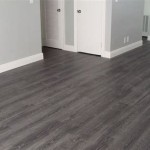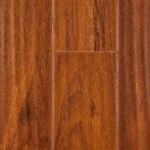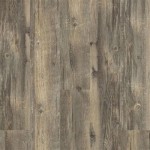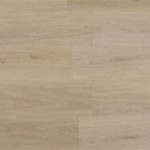Installing Tongue and Groove Flooring Without Nails: A Comprehensive Guide
Tongue and groove flooring offers an elegant and durable flooring option that can be installed without the need for nails. This method not only simplifies the installation process but also provides a more seamless appearance and reduces the risk of squeaking or buckling over time. Here's a comprehensive guide to help you successfully install tongue and groove flooring without nails:
1. Preparation
Before starting the installation, ensure the subfloor is level, dry, and free of debris. Install a vapor barrier over the subfloor to prevent moisture from entering the flooring. Measure the room and cut the flooring planks to the desired length using a miter saw.
2. Adhesive Preparation
Choose a high-quality construction adhesive specifically designed for tongue and groove flooring. Follow the manufacturer's instructions on how to apply the adhesive. Usually, the adhesive is applied in a thin line along the top edge of the groove on the flooring planks.
3. Installing the First Row
Start by installing the first row of flooring parallel to the longest wall in the room. Apply the adhesive to the groove of the first plank and insert the tongue of the second plank into it. Tap the planks together using a rubber mallet to secure them. Continue this process until the first row is complete.
4. Subsequent Rows
For subsequent rows, apply adhesive to both the groove of the plank being installed and the tongue of the previously installed plank. Insert the tongue into the groove and tap them together. Ensure the planks align correctly and the joints are tight. Use spacers along the edges of the room to maintain a consistent gap.
5. Staggering the Joints
To enhance the strength and stability of the flooring, stagger the joints of each row by at least 6 inches. This prevents the potential for a continuous seam that could weaken the flooring over time.
6. Cutting and Fitting
For areas where the flooring needs to be cut, such as around corners or doorways, use a jigsaw to make precise cuts. Apply adhesive to the cut edges and fit the pieces together snugly.
7. Expansion Gap
Allow a small expansion gap around the perimeter of the room to account for movement due to changes in temperature and humidity. Use quarter-round molding or baseboards to cover the expansion gap and create a finished look.
8. Finishing
Once the flooring is installed, allow the adhesive to dry completely according to the manufacturer's instructions. If desired, sand and finish the floor with a polyurethane or wax finish to enhance its durability and protect its surface.

Installing White Oak Floor Without An Nailer

Installing White Oak Floor Without An Nailer

All You Need To Know About Tongue And Groove Flooring Installation Reallyfloors America S Est Hardwood

Floating Floor Vs Nail Down Slaughterbeck Floors Inc

How To Install Beautiful Wood Floors Using Basic Unfinished Lumber The Creek Line House

How To Install Hardwood Flooring The Home Depot

How To Install Hardwood Flooring The Home Depot

Floating Floor Vs Nail Down Slaughterbeck Floors Inc

Does Solid Wood Flooring Need Underlay Quora

Which Method Should I Use To Install My Engineered Wood Floor Tesoro Woods








